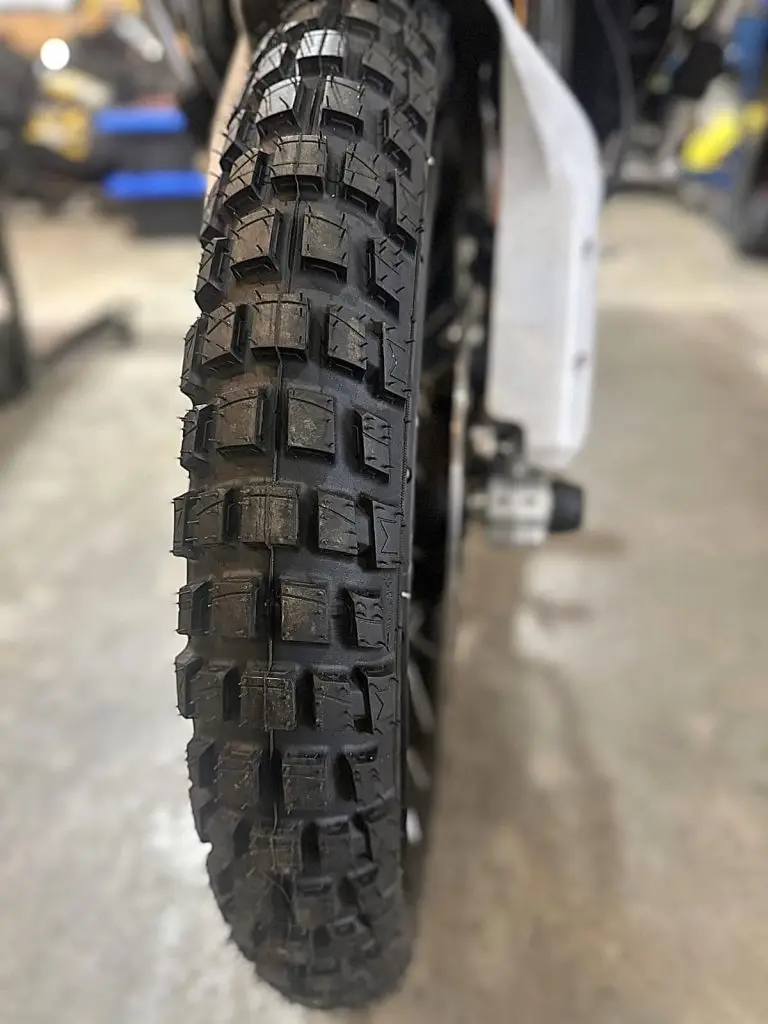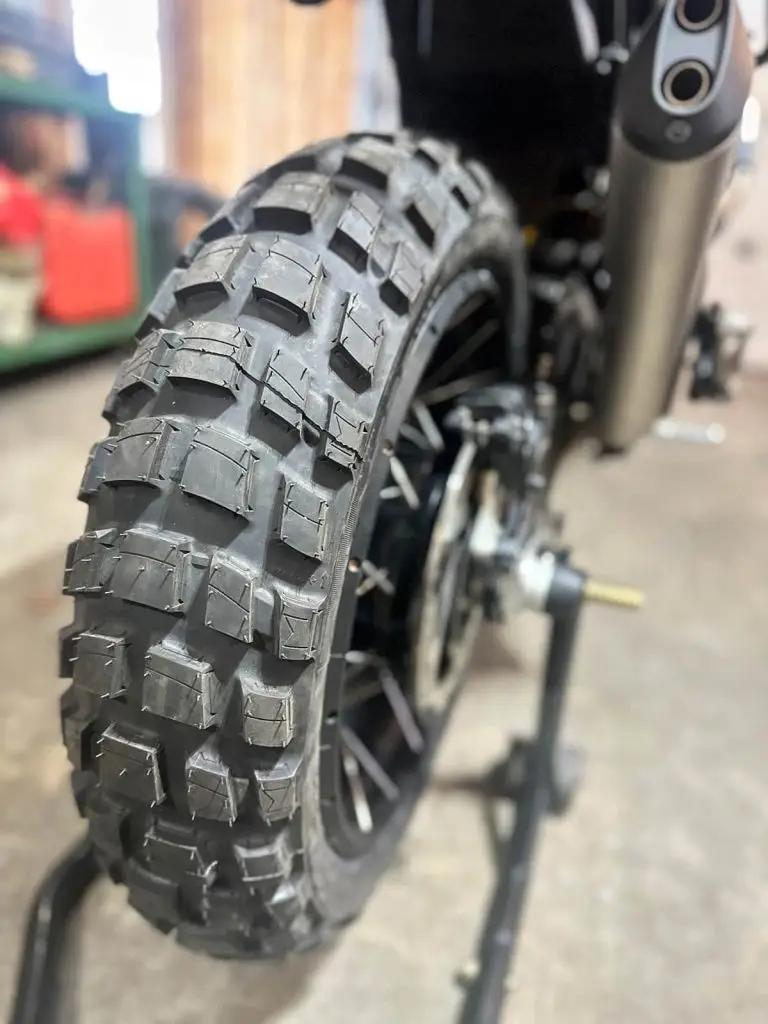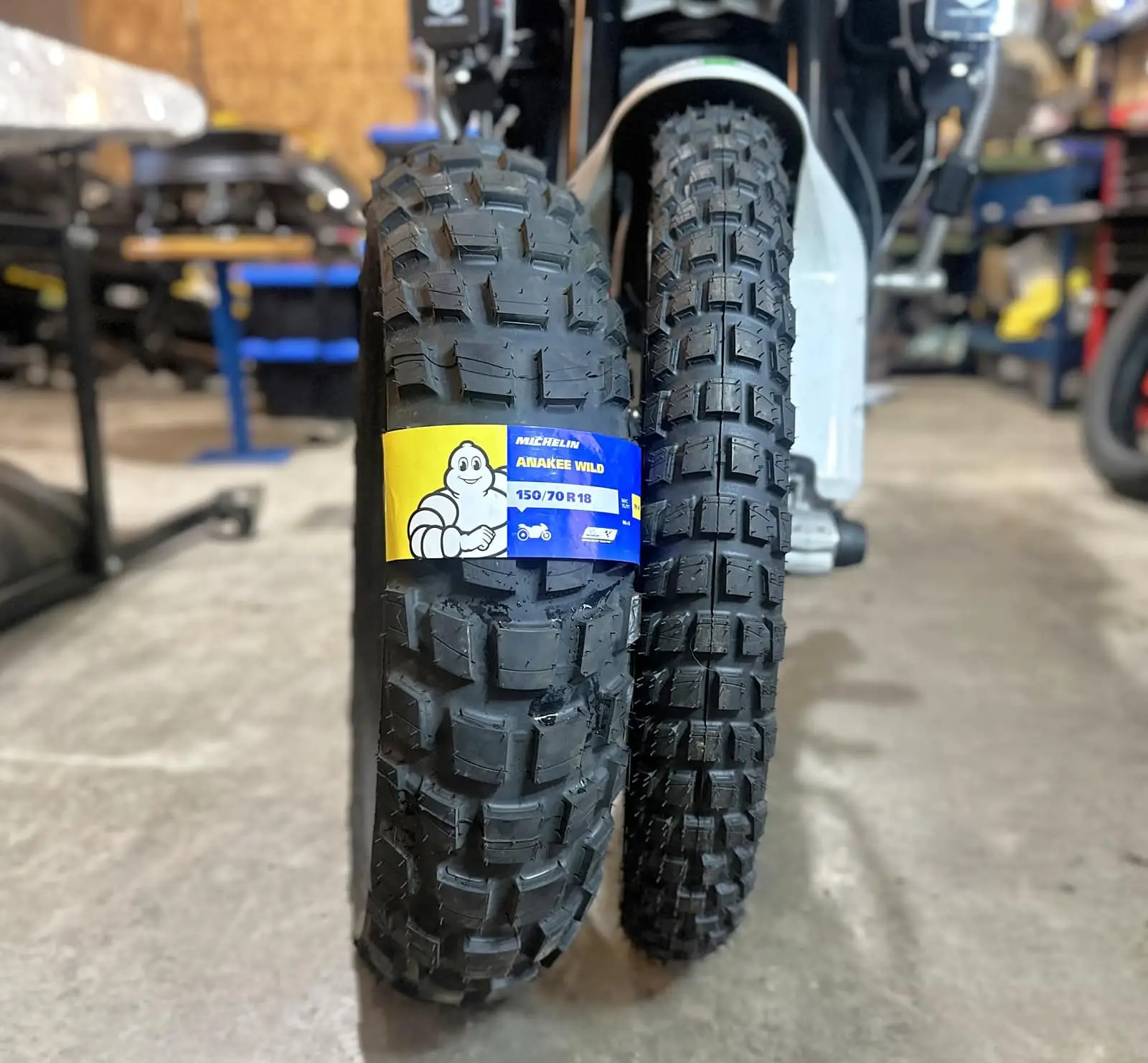Table of contents
ToggleChoosing the right tire for an adventure bike, such as the Ducati Desert X, is crucial. Especially if you want to switch between pavements, gravel roads, and serious off-road terrain. In this article, I’m sharing my full experience with the Michelin Anakee Wild adventure tire, fitted front and rear. We’ll take a close look at how it performs on pavement, gravel, and in extreme conditions (mud//water), along with my thoughts on installation, tire pressure, and durability.
1. On-Road Performance
Right after installing the Michelin Anakee Wild, the first thing that struck me was its firmness—especially compared to a tire like the Dunlop Trailmax Raid, which I previously tested. The Dunlop feels as if it adds a second suspension with its softness, while the Michelin is far more rigid. This translates into a harsher feel, with every bump and crack in the road transmitted straight through to the bike.
Another noticeable aspect: I experienced consistent vibration in the handlebars and a higher noise level. These effects are due to the tire’s more aggressive off-road tread pattern. It’s not a deal-breaker, but definitely noticeable.
In corners—particularly at higher speeds—the tire lacks precision. There’s a slight instability due to the knobbies, which can make the bike feel less confidence-inspiring during sportive riding on pavement roads.
On wet roads, the tire is stable under normal riding conditions. However, during hard acceleration in second gear, it slips easily and triggers the traction control. The same goes for heavy braking, especially in off-road mode with rear ABS off—the rear tire can lock up and slide out. That said, under moderate riding, the tire remains predictable and safe.
2. Gravel Road Performance
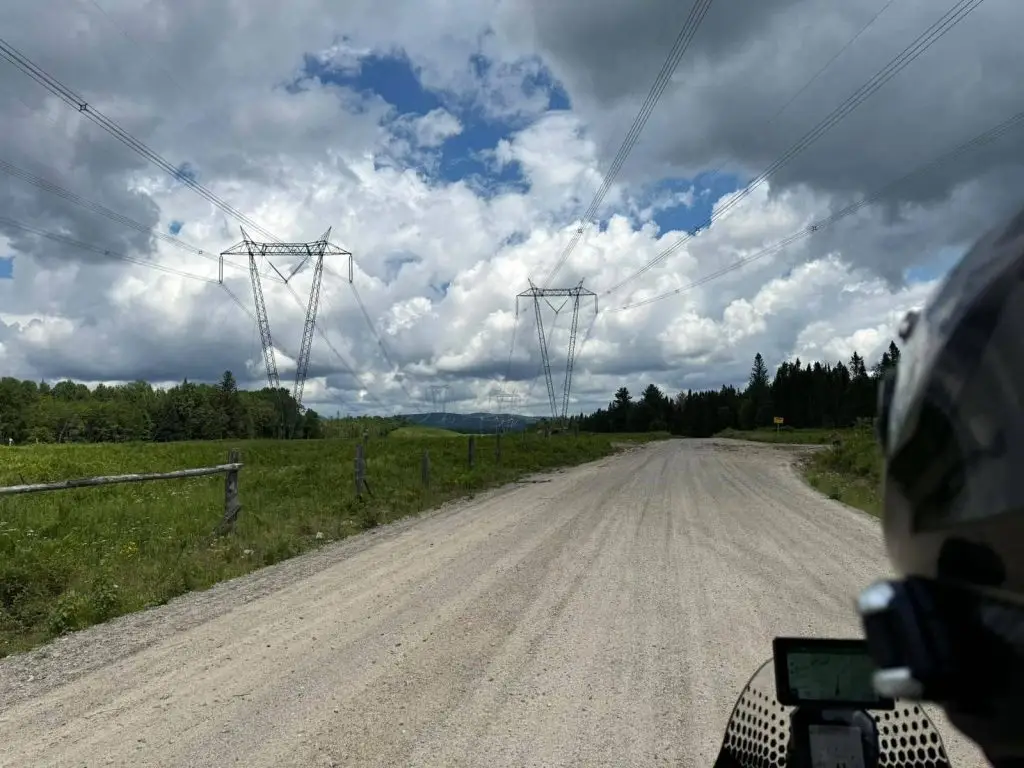
On dry gravel roads, the rear tire tends to break loose when exiting turns, particularly under aggressive throttle. I had to bump up the traction control level to reduce lateral slippage, especially when riding at a faster pace.
Braking showed similar results: the tire struggled to bite into the gravel. I had a few unsettling moments when the bike seemed to keep going straight despite pressing the rear brake.
That said, the front tire remained stable in most situations. For casual gravel riding, overall behaviour is good. It’s only when pushing the pace that its limits become clear—no miracles here.
3. Extreme Conditions (Mud, Water)
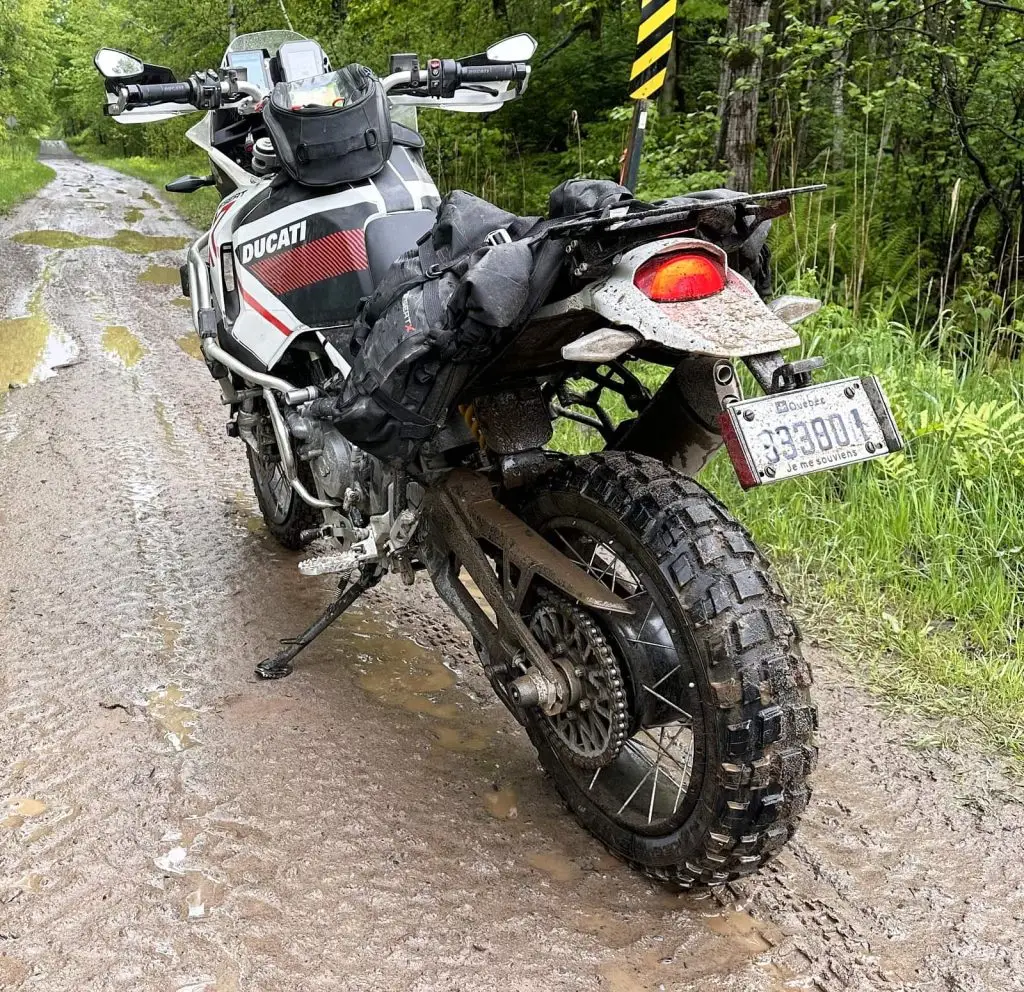
This is where the Michelin Anakee Wild truly impressed me. On trail rides with lots of water, mud, and deep puddles, the rear tire offered excellent traction. It helped me get out of muddy spots without much hassle.
The biggest difference was up front, compared to the Dunlop Trailmax Raid, which leans more road-focused. The Michelin provided greater stability and less lateral sliding in ruts. Its behaviour in muddy corners was also more reassuring—unlike other tires that slip so much, you’re forced to put a foot down to avoid falling.
Tire Pressure Sensitivity
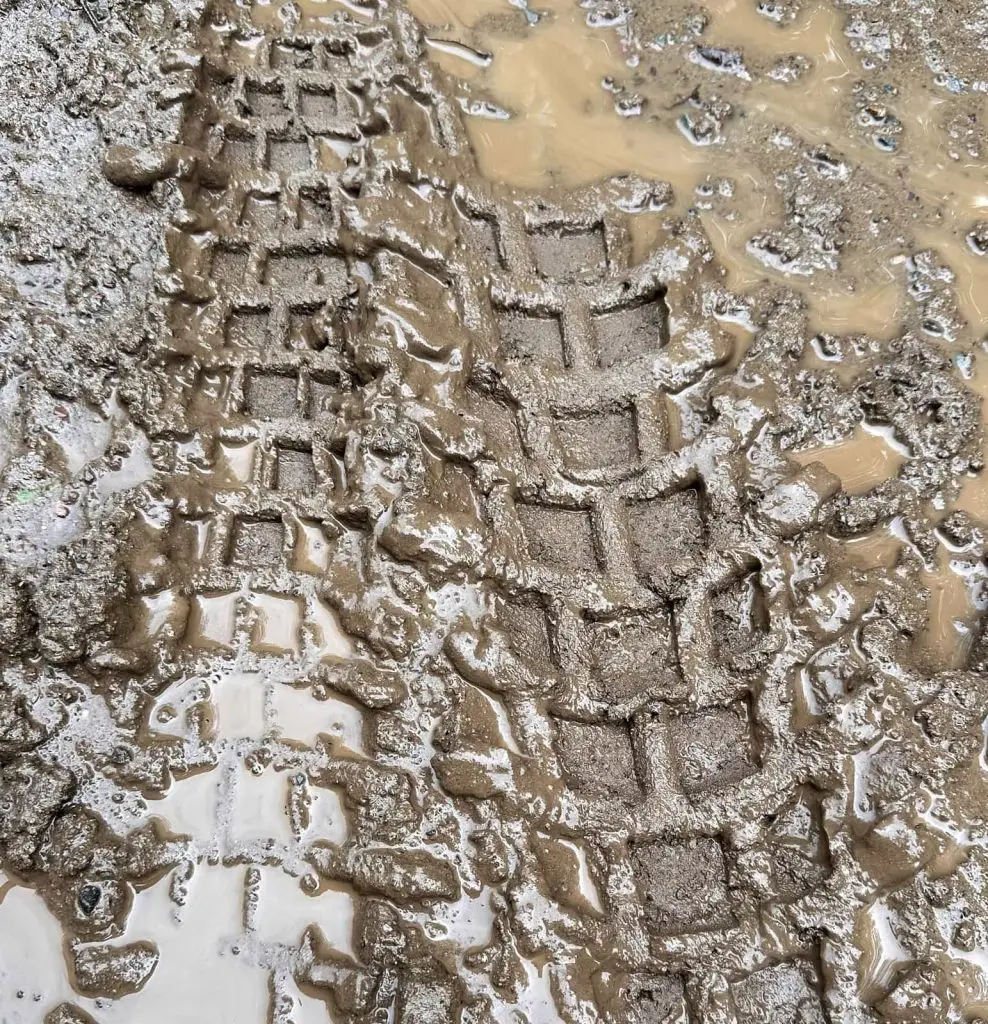
This tire is particularly sensitive to pressure. To improve grip on slick surfaces (mud, clay, and loose gravel), I ran about 20 psi front and rear, which significantly stabilized the bike. Lowering the pressure like this offers better grip in the worst conditions, and I recommend adjusting pressure depending on terrain.
However, even with an aggressive tire like this one, rider skill remains key. In slick, sloped clay sections, the tire still struggled to bite in and lost effectiveness. Body position and riding technique are essential. An off-road tire won’t compensate for a lack of skill—it only enhances potential.
4. Installation, Durability & Tips
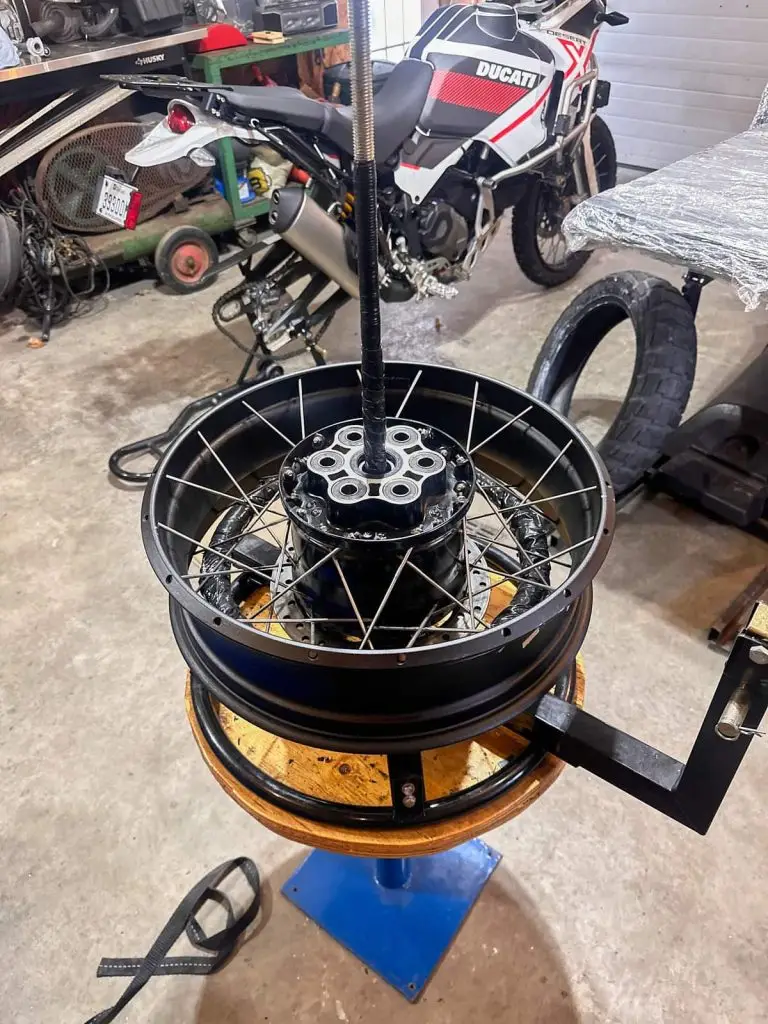
I installed both front and rear tires myself, and I have to say they were relatively easy to mount—especially compared to tires like the Dunlop Trailmax Mission or Motoz, which are known for their very stiff carcasses. With the right tools, installation is straightforward.
This is great news for anyone who might need to patch a flat tire out on the trail: this tire shouldn’t be too difficult to remove or reinstall in the field.
As for durability, I haven’t ridden enough yet to make a long-term judgment. But visually, based on the shape and spacing of the knobs, I doubt the rear tire will last 10,000 km. Time will tell.
The wide knob spacing is definitely effective for clearing out mud, which boosts off-road performance.
Conclusion: A Tire Built for Adventure
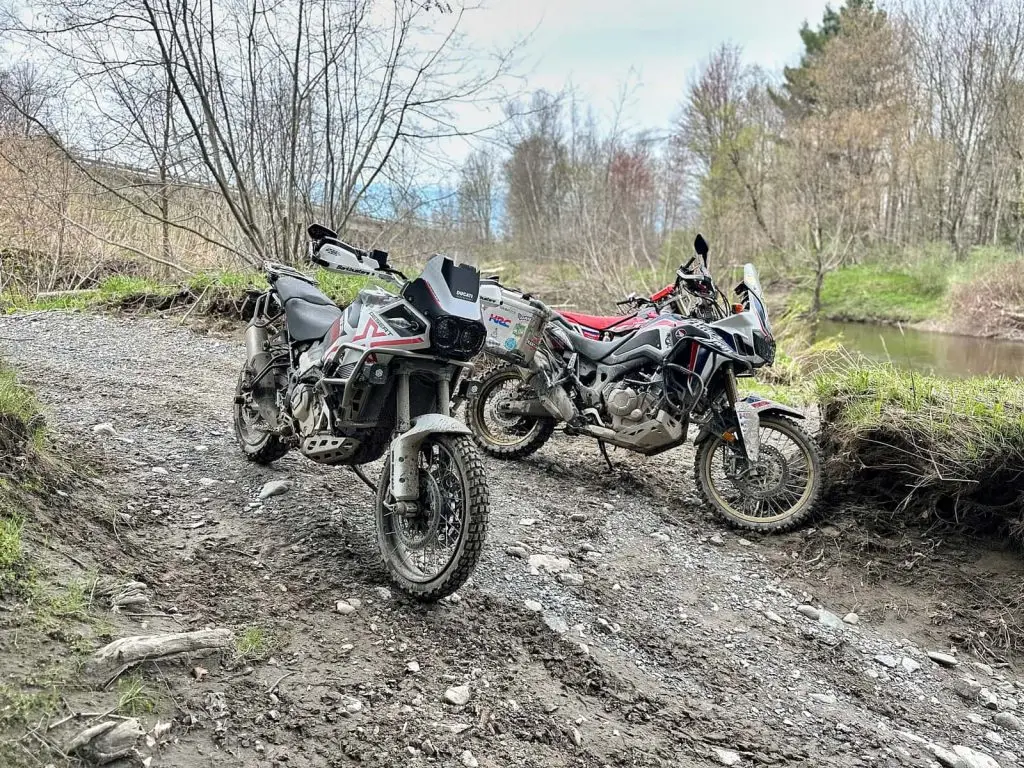
In summary, the Michelin Anakee Wild is a clearly off-road-focused tire that excels in muddy, technical, or challenging terrain. On pavement roads, it’s decent, but not outstanding—and even a bit of a liability on wet roads or during fast cornering.
I recommend it to those who spend at least 70% of their mileage on trails or gravel roads. For mostly road use, there are more comfortable, quieter, and more stable options available.
To get the most out of it, adjust tire pressure according to the terrain—especially dropping it to around 20 psi for slippery or technical zones. This will improve overall performance and boost confidence on the bike.
✅ Pros
- Excellent traction in mud and extreme terrain
- Good off-road stability
- Relatively easy to install, even solo
⚠️ Things to Watch
- Vague on-road handling, especially in fast corners
- Highly pressure-sensitive—requires tuning for terrain
- Less comfort on pavement with more vibration and noise
